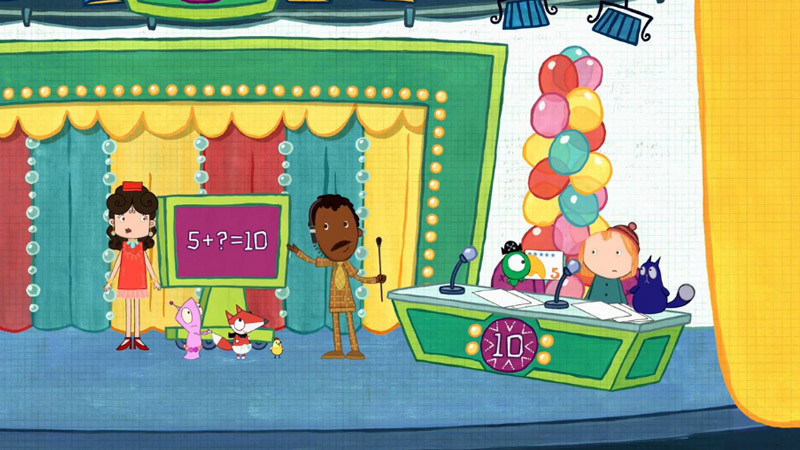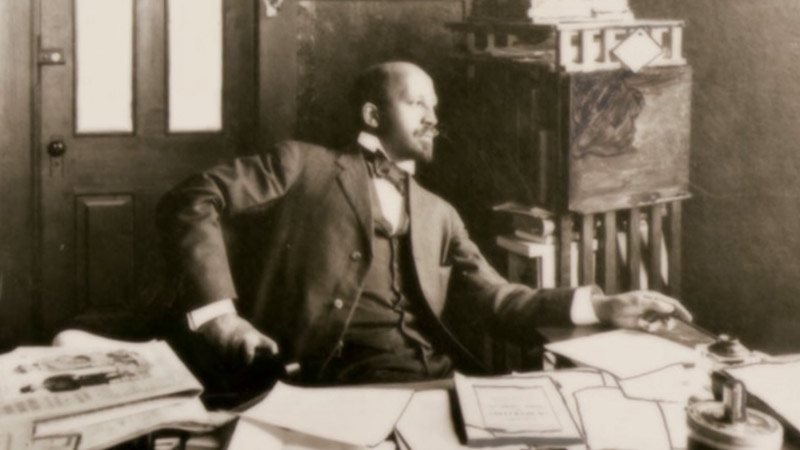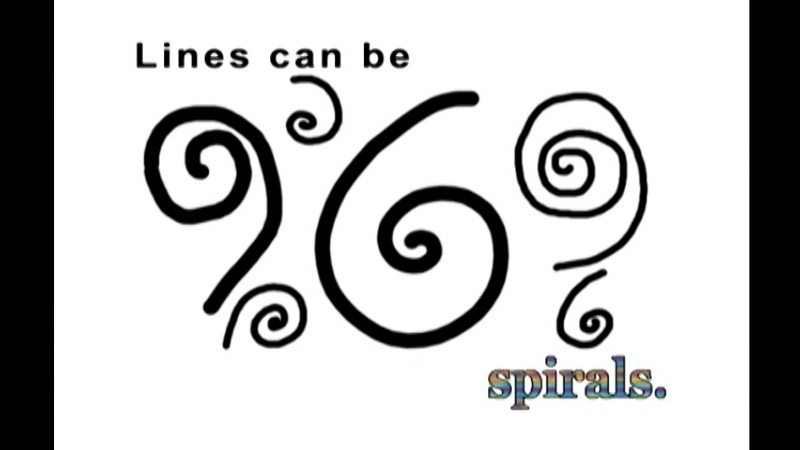Description Key - What to Describe
General
- Describe what is most essential for the viewer to know in order to follow, understand, and appreciate the intended learning outcomes of the program (such as actions and details that would confuse or mislead the audience if omitted) in the time allowed. Determine the most important elements, prioritize, and deliver the description in the limited time available.
 Clip from Peg + Cat: The Perfect Ten Problem And The Long Line Problem
Clip from Peg + Cat: The Perfect Ten Problem And The Long Line Problem - Start generally, creating a context, then move to details to enhance understanding and appreciation. The initial information presented about a scene will create a foundation in the minds of the audience members.
- Focus on what is the most significant and least obvious from the dialogue and sound track in order to prioritize the description.
 Clip from The Living Oceans - Venomous Marine Adaptations
Clip from The Living Oceans - Venomous Marine Adaptations - If and when time permits, describe additional visual detail that aids in the comprehension and appreciation of the production.
 Clip from Geoquest: Guatamala
Clip from Geoquest: Guatamala - Include key elements in the description, such as style, setting, focus, period, dress, facial features, objects, and aesthetics.
- If describing types of media used in a program, such as photographs or archived footage, be specific.
 Clip from Great African American Authors—Program 2: 1902-1924
Clip from Great African American Authors—Program 2: 1902-1924 - Describe shape, size, texture, or color, as appropriate to the comprehension of the content.
 Clip from Getting to Know Line In Art
Clip from Getting to Know Line In Art - Identify color when it is vital to the comprehension of content.
- When describing color, use basic colors and shades.
 Clip from Getting to Know Color In Art
Clip from Getting to Know Color In Art
Note: While this guideline appears to contradict the parts-to-wholes learning style described in the introduction, it is helpful to create an organizer that facilitates efficient and speedy acquisition of content instead of relying on (and waiting for) the child's inductive reasoning to establish the context for the activities on screen.
Characters/People
- Consistently identify people/characters by name. Generally, if a name is not given, identify by an "obvious" attribute until a name is provided.
In this example from Elmo's World, note that the recurring Sesame Street characters are identified by name but that non-regular characters (those who presumably do not appear on a consistent basis) are identified by physical attributes, even those who are celebrities. Clip from Sesame Street
Clip from Sesame Street - When relevant to the content, describe individuals by using the most significant physical characteristics.
- When time allows, and especially when important to the meaning / intent of content, describe race using currently-accepted terminology. Do not make assumptions as to someone's race and use general terms when information is not known. When including descriptions of race, include descriptions of BIPOC as well as white individuals.
- Describe discernable attributes and expressive gestures, but do not describe what is inferred by them, such as emotional states.
 Clip from Self-Esteem: Being the Real Me
Clip from Self-Esteem: Being the Real Me - Description must be consistent. Utilizing the same character names and/or vocabulary throughout a production or series of productions is essential.
Scenes and Scene Changes
- Convey scene changes if relevant to unfolding action or important for understanding or appreciation of the program.
- If time permits, describe montages of images that often serve a supporting role, but be succinct and clear.
 Clip from Adaptive Function of Form: The Beauty of Ugly
Clip from Adaptive Function of Form: The Beauty of Ugly - If time permits, describe the series of still images, such as those often used during a documentary interview, to highlight certain subjects being discussed by the person or people being interviewed.
Passage of Time
- As with scene changes, indicate passages of time that are essential to the comprehension or appreciation of a program's content. Do not interpret the passage of time specifically, however, unless objective evidence supports it.
- When describing certain passages of time, such as flashbacks or dream sequences, for younger audiences, it is sometime impractical to use describing conventions that one might use for adults. In some cases, it is necessary to explicitly tell the audience what is happening rather than describing the action.
Another option would be to describe the visual cues that let the audience know there is a flashback.
Generally, describe what you see and do not use cinematic terms (e.g., flashback or dream sequence); however, this sometimes becomes necessary due to time constraints.
Expanded Description
- When expanded description (also called extended description) is a technical option, provide description before the content rather than after. Expanded description pauses the production automatically at certain points to allow for a more in-depth description of the content. Providing the description before the content corresponds to the practice of pre-teaching and also ensures that students who are visually impaired receive information at or around the same time as their sighted peers do.
Tags:

